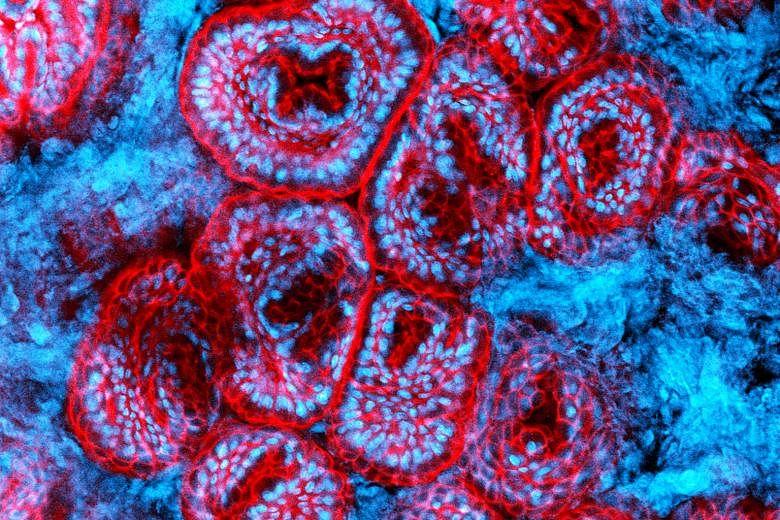A fluorescent microscopy image of gastric tissue with several pre-cancerous lesions. Such pre-cancerous lesions originate from mutated Lgr5-positive stomach cells. The DNA-containing nuclei are coloured in blue, while borders between cells are coloured in red. The Barker Laboratory at the Agency for Science, Technology and Research's (A*Star) Institute of Medical Biology (IMB) studies the role of Lgr5 stem cells in the cancers of various organs, including the stomach. One of its goals is to develop ways to block the cancer-promoting activities of mutated Lgr5 stem cells. Indeed, a team of scientists from IMB recently discovered a new population of Lgr5-expressing cells within the lining of the major digestive region of the stomach, which is known as the body or corpus. They found that they are recruited to function as stem cells for epithelial (tissue) renewal following injury. However, they are also a major source of gastric cancer when they are mutated. According to the World Health Organisation, gastric cancer is the fourth leading cause of cancer globally. In Singapore, it is among the top 10 most common cancers. More than 500 people here are diagnosed with it each year, and over 300 die of it yearly.
Beautiful Science

Join ST's WhatsApp Channel and get the latest news and must-reads.
A version of this article appeared in the print edition of The Straits Times on August 18, 2017, with the headline Beautiful Science. Subscribe
